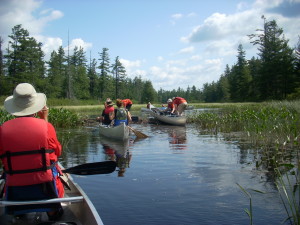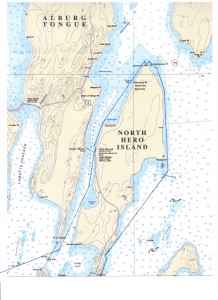 With the advent of cell phones and satellite phones, not to mention SPOT devices, the question of whether to bring some kind of communication means when exploring the backcountry is being asked more and more.
With the advent of cell phones and satellite phones, not to mention SPOT devices, the question of whether to bring some kind of communication means when exploring the backcountry is being asked more and more.
Indeed, all Northern Tier crews carry a radio for emergency communication with the base camp, although reportedly some crews also take the initiative to bring a satellite phone as additional means of communication.
The ability to use a cell phone may be slowly improving. This obviously depends, however, on the status of the cell phone battery, and whether, for instance, the Northern Tier crew is in range of any of the recently-installed cell towers at the edge of the Boundary Waters. And, did the user of the cell phone bring a phone number for use in emergencies?
The Grand Canyon suffers from similar communication issues, as discussed in this story.
A crew from the author’s troop during a kayak trek on Lake Champlain during summer 2015 (Curtis Read Scout Reservation) was provided a SPOT device, which enabled the crew to check in with the base camp, so that the base camp knew each crew’s status and location each day. Crews at the Maine High Adventure Base are provided radios, and the crew’s staff member provides base camp with a crew status check each day.
The use of a SPOT device enabled a California hiker who had run out of water to be rescued in an isolated wilderness area.
This California scout troop was able to request helicopter medical assistance for other hikers using a SPOT device.
However, the ability to request assistance using advanced communication devices such as SPOT devices can also lead to unnecessary rescue attempts and risk to rescuers, when used in non-emergency situations.
A Colorado mountain rescue team provides advice regarding communications in the wilderness, particularly cell phone usage.
And, if assistance is requested via a 911 cell phone call, it is important to be able to identify the location of the person in need of assistance, otherwise the arrival of rescue personnel may be delayed.
In the end, the decision regarding what type of communication means, if any, to bring will depend on its usefulness in the wilderness.
And, remember that “communications” is one of the Sweet Sixteen of Scout Safety!
However, importantly, the group participating in the activity should still be prepared to deal with emergencies in the absence of assistance to the extent possible, recognizing that if assistance can be contacted, its arrival will generally not be immediate (particularly in inclement weather).
And, of course, the best way to avoid having to use any type of wilderness communication means is to employ a rigorous risk management plan.

